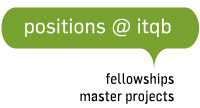[Seminar] Multiple Pathogen Recognition by Plant Immune Receptors
| When |
13 May, 2019
from
01:30 pm to 03:00 pm |
|---|---|
| Where | 2.13 Room |
| Add event to your calendar |
|
Title: Multiple Pathogen Recognition by Plant Immune Receptors
Speaker: Matthew J. Moscou
Affiliation: The Sainsbury Laboratory, Norwich Research Park, Norwich, NR4 7UH, United Kingdom
Abstract:
The majority of NLR-encoding resistance genes recognise single pathogen species; few NLRs have the capacity to recognise multiple pathogens. The Mla locus has over 30 described alleles conferring isolate-specific resistance to Blumeria graminis f. sp. hordei (powdery mildew), contains three NLR encoding gene families (RGH1, RGH2, and RGH3). Resistance to powdery mildew is conferred by NLRs derived from the RGH1 gene family. In addition to powdery mildew, the Mla locus is associated with resistance to multiple pathogens including Puccinia striiformis f. sp. tritici (wheat stripe rust; Rps7), Magnaporthe oryzae (rice blast; Rmo1), and sensitivity to the Cochliobolus victoriae victorin toxin (Lov1). We performed high-resolution recombination screens using multiple alleles of Mla and confirmed the genetic coupling of Mla3/Rmo1/Lov1, Mla7/Rps7, and Mla8/Rps7. Using sequence capture and RNAseq, we discovered substantial intraspecific copy number variation and expression levels for all Mla alleles. Evaluation of stable transgenic barley found that Mla3 conditions powdery mildew and rice blast resistance, and both Mla7 and Mla8 condition powdery mildew and wheat stripe rust resistance. This work, coupled with the recent discovery of direct interaction of MLA and AVRa effectors (Saur et al. 2019), suggests that MLA has the capacity to recognize molecular structures conserved among plant pathogen effectors.







